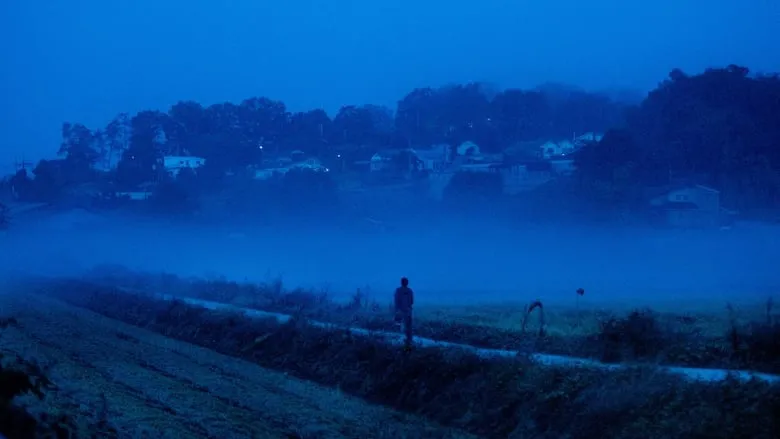A Tale of Two Burnings: Unpacking Social Inequality in “Burning”
Lee Chang-dong’s 2018 film, “Burning,” is more than just a thriller; it’s a smoldering critique of social stratification in South Korea. This slow-burn masterpiece, nominated for the Palme d’Or at the 71st Cannes Film Festival, meticulously unravels a haunting story of love, loss, and the corrosive impact of class divisions. Prepare to be captivated by its poignant narrative and thought-provoking themes.
Echoes of Childhood and a Feline Enigma
The narrative follows Jong-su, an aspiring writer grappling with his identity, and Hae-mi, a young woman yearning for a meaningful existence through acting. Their paths, once intertwined as childhood neighbors, cross again after Hae-mi returns from a transformative journey to Africa. Before departing, she asks Jong-su to watch her cat, a seemingly insignificant detail that evolves into a potent symbol of their delicate bond. Jong-su is struck by a singular feature of Hae-mi’s humble apartment: a fleeting shaft of sunlight glancing off a distant tower, a solitary, almost sterile gleam in an otherwise muted existence. This stark image sets the stage for the film’s exploration of poverty and aspiration.
Both Jong-su and Hae-mi are emblematic of a generation struggling against societal constraints, desiring to break free from their limiting circumstances.
Affluence and Absence
Upon her return, Hae-mi introduces Ben, a wealthy and urbane figure who seems to effortlessly navigate a world of privilege. He embodies the trappings of wealth – expensive cars, a luxurious residence – juxtaposed with a disturbing detachment from ordinary human concerns. A memorable scene unfolds on Ben’s balcony, where Hae-mi performs a mesmerizing dance, a visual metaphor representing her transition from “little hunger” (material deprivation) to “great hunger” (a quest for deeper meaning and purpose). Shortly thereafter, Hae-mi mysteriously vanishes, leaving behind a void filled only with unanswered questions.
The desolate landscapes become crucial for Jong-su’s tireless search. Ben represent’s Hae-mi’s desire future, creating a strak constrast between his opulent and carefree lifestyle and Jong-su’s struggling.
Jong-su’s desperate search unfolds against a backdrop of aging buildings, disused wells, barren fields, and swirling dust storms. Could Ben possibly be the embodiment of Hae-mi’s aspirational future, a stark counterpoint to Jong-su’s own modest life? The film delicately probes the near-universal impulse to transcend economic hardship and align oneself with the wealthy elite.
The Dark Side of Wealth: A Philosophy of Destruction
Ben possesses a chillingly peculiar pastime: he burns down abandoned plastic greenhouses every two months. This ritualistic act is not merely an eccentric hobby; it’s a chilling representation of his worldview, a philosophy rooted in the casual erasure of dreams, hopes, and the very existence of the vulnerable. His words often flow with effortless grace and composure, concealing a disquieting darkness beneath – the deceptive allure of a devil in disguise.
It becomes clear that Hae-mi’s connection to Ben is based on the allure of wealth while her connection to JongSu is based on love, Jong-su can’t reach Hae-mi.
Hae-mi’s connection to Ben can be interpreted to rooted in money. As Jong-su anticipates what could very weel be Ben’s next arson, the film becomes eerily unsettelling and pushes it’s’ viewer into feeling uncertain.
The Unseen, the Unheard, and the Uncared For
Jong-su embarks on a journey into Hae-mi’s past, fueled by a growing conviction that Ben is somehow deeply implicated in her disappearance. The lack of concern towards Hae-mi mirrors the in difference shown to that of a lost cat. But, for Jong-su this search is imperative, since he sees both love and sense of purpose in Hae-mi. Also as he continue to care for this nonexistent cat it become symbol for an underlying connection in his heart.
As Jong-Su continuously pursues Ben’s underlying truth he always seemse to keep composure and maintain a fa cade.
The narrative becomes a solitary pursuit, with Jong-su tenaciously seeking Ben. Ben shows facade to concel an underlying darkness.
The Price of Justice
As Jong-su finds Hae-mi’s watch at Ben’s resident the viewer, and Jong-su concludes that she is no loger with us. Consumed by anger Jong-su Murders Ben and sets the car ablaze, an end to the ambiguous relationship.
Two Sides of the Same Coin
“Burning” meticulously paints Ben as a callous manupulator, completely devoid of empathy,. Contrastly, Jong-Su depicted to have deep emotion who only acts with sincerety. Ben’s burn act reflects him being careless and oblitering the aspirations of those who try to escape from poverty. Jong-Su Violence is more so of him acting out of revenve. The film represents to type sof burning one being over, the other being undercover. One of both is undeniable evil.
The film poses that, how are justice and evil represented the eyes of law as both are cold and differnt society?
Lee Chang-dong’s uses a lot of literary symbolism, atmosphere and music to it’s emotional impact. Seeming simple scenes become rich with symbolic meaning. The disparity between the vulnerable and marginalized and how indifferent the the powerful which lead the the film’s climax. “Burning” illuminates like lightning as to how an ugly and full of despair world can be.